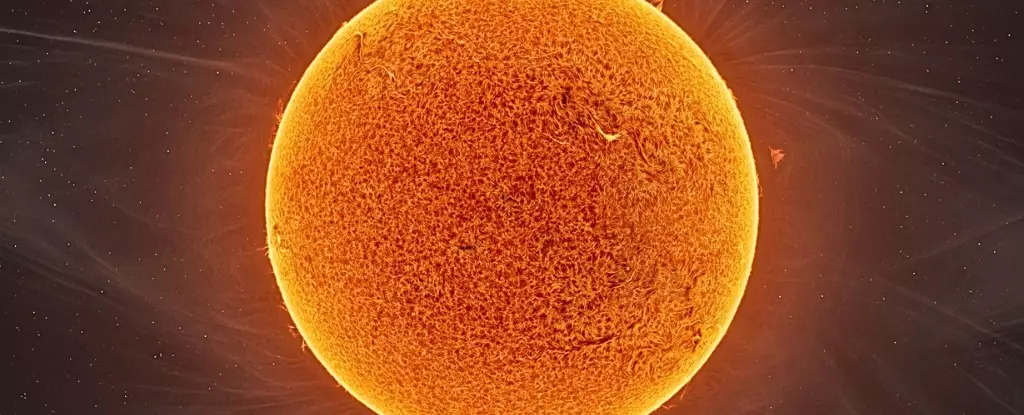In a remarkable intersection of art and science, a recent study illustrates how the “music” generated by starquakes—phenomena triggered by the violent bursting of gas bubbles within stars—offers profound insights into the development and life cycles of these celestial giants. This groundbreaking research, published in the journal Nature, centers on the M67 star cluster, a group of ancient stars situated nearly 3,000 light-years from Earth. Utilizing data obtained from the Kepler space telescope’s K2 mission, scientists have unearthed a wealth of information about the intricate histories hidden within these giants, highlighting the unique ability of starquakes to unlock the mysteries of stellar evolution.
Understanding Starquakes: More than Just Cosmic Noise
At first glance, starquakes may seem to be mere fluctuations in the vast cosmos, but they are akin to earthquakes on Earth, providing a sonic lens into the heart of stars. These “quakes” occur when hot gas bubbles rise to the surface, creating vibrations detectable as varying brightness in the stars. Like an artist’s brush on canvas, these vibrations paint a multidimensional picture of a star’s internal structure—a melody composed of resonant frequencies that reveal the physical properties and evolutionary state of the star.
Recent findings have unveiled that these frequencies encapsulate a wealth of information. In a clever twist, scientists investigated how the signature “small spacing” among frequencies offers insights not just for younger stars such as our Sun, but also for older red giants long thought to be devoid of hydrogen fusing in their cores. Unlike a static piece of music, these frequencies can shift, offering a dynamic interpretation of stellar life and decay.
Revolutionizing Stellar Analysis
What was once perceived as a stagnant understanding of the small spacings in a star’s resonant frequencies took a dramatic turn with the new findings from M67. Initially thought to reveal little about older stars, these small spacings have now been shown to reflect significant changes in the stellar fusion processes. As the hydrogen-bearing shell surrounding the inert core thickens, the small spacings between resonant frequencies evolve, shifting in rhythm with the star’s life cycle.
This observation is akin to a conductor guiding an orchestra—changes in the symphony of frequencies reflect the complex interplay of various factors, including stellar mass and elemental composition. This heralds an era of deeper understanding that allows astronomers to refine their models and interpretations of not just individual stars, but the collective history of our galaxy.
The Stalling Phase: A Discovery with Distinctive Implications
Perhaps the most striking revelation of this study is the phenomenon known as the “stalling” of small spacings at particular evolutionary stages. Similar to a record skipping—a momentary interruption in the flow of music—this stalling occurs when a star’s outer layers become so heavy that they encroach into a very sensitive region of its internal dynamics. At this critical threshold, the tumultuous conditions disrupt the transmission of sound waves through the star, creating new puzzles to solve for astronomers.
The implications of this discovery extend far beyond theoretical curiosities. By pinpointing the characteristics of stalling frequencies, scientists can more accurately identify and categorize stars, facilitating improved age estimations. This transcends simple academic interest; it allows astronomers to construct a more intricate timeline of the Milky Way’s evolution, shedding light on how it has been shaped by star formation and galactic mergers over eons.
The Broader Cosmic Context
Stars serve as the universe’s timekeepers, their life cycles embodying the cosmic history of formation and destruction. Understanding such cycles through the lens of starquakes is akin to turning the pages of a cosmic historical manuscript. The revelations gleaned from M67 not only inform us of our own Sun’s eventual fate but also contribute to our comprehension of the wider context in which the Milky Way has evolved.
M67 serves as an invaluable archive, containing a treasure trove of stars sharing a chemical lineage with our Sun. Insights drawn from this cluster allow scientists to hypothesize about not just the past, but the future trajectories of similar stars scattered across the cosmos. As we refine our tools for stellar analysis, we unlock new chapters of a narrative written in starlight.
A Call for Re-examination
This new research signifies a compelling invitation for the astronomical community to revisit existing datasets. Years of seismic observations may hold untapped treasures, waiting for scientists equipped with fresh perspectives to “listen” anew. As we develop a more profound understanding of how stars resonate, we may arrive at unexpected revelations—insights that could redefine our concepts of galactic history and the forces that govern it.
The melody of the universe is complex and varied, and as scientists respond to the vibrant tonalities of starquakes, they embark on a journey that reshapes our ideas of life beyond Earth. The astonishing interplay of vibrations not only captures the essence of galaxies but also rekindles humanity’s whimsical curiosity about our place in this grand cosmic symphony.

